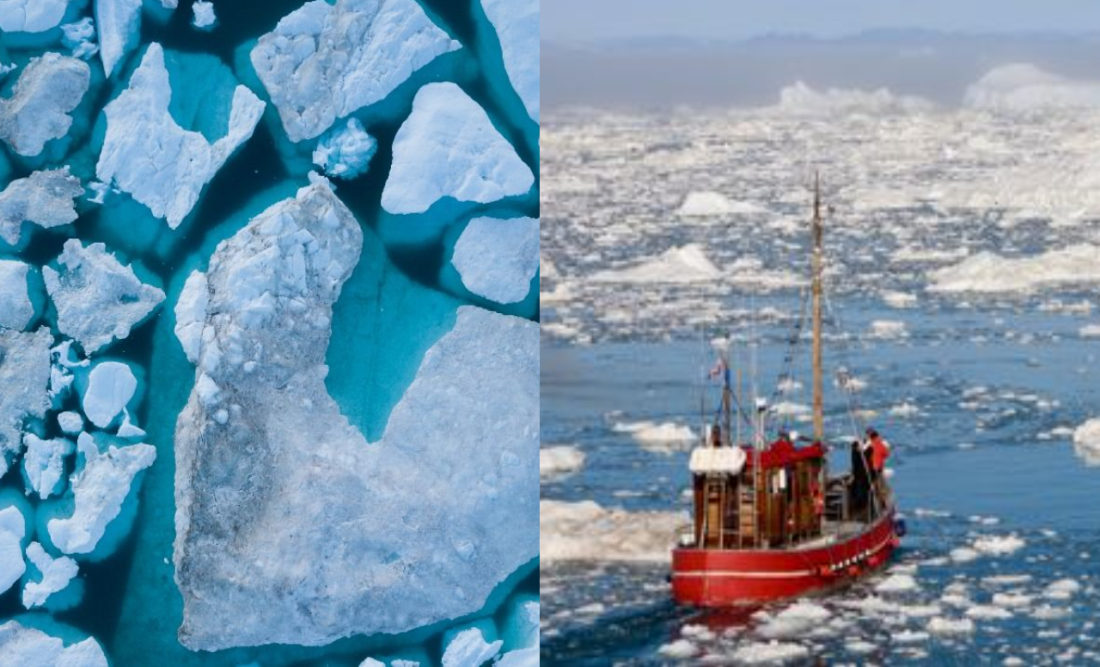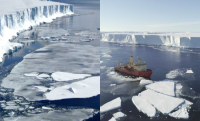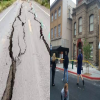New research reveals widespread ice losses in Greenland of nearly a foot, will cause major sea level rise.

Greenland's melting ice sheet will cause a major sea level rise. No matter how much the climate warms, the study published on Monday in the journal Nature Climate Change determined that the overall ice loss from Greenland's ice sheet will result in a sea level increase of at least 10 inches. That's almost the same amount that the world's waters have already risen from Greenland, Antarctica, and thermal expansion (when ocean water expands as it heats) combined over the last century. Meltwater runoff has been the fundamental cause of the changes in the volume of the ice sheets in and around Greenland, according to researchers from the Geological Survey of Denmark and Greenland. The scientists were able to estimate that 3.3% of the Greenland ice sheet, or 110 trillion tonnes of ice, will ultimately melt as the ice sheet responds to the changes that have already taken place using "well-established theory." Because future warming is not taken into account, the "shocking" results are also the lowest estimate, according to lead author Jason Box of the National Geological Survey of Denmark and Greenland.
According to NASA, the Arctic region is currently heating up more quickly than the rest of the planet, which is the main cause of the Earth's oceans being swollen. The findings follow the National Oceanic and Atmospheric Administration's research on sea level rise until the year 2022, which indicated that the US coasts may anticipate a rise in sea level of 10 to 12 inches. The paper claims that as a result, high tide floods will happen more than ten times as frequently and storm surges will be able to move farther inland.
In Greenland, temperatures near 32 degrees Fahrenheit were unheard of before human-caused climate change took effect. However, the region has warmed by about 1.5 degrees per decade since the 1980s, which is four times faster than the rate of global warming, making it more likely that temperatures will reach the melting point.
According to the IPCC's annual report on climate impacts, even if global warming is stabilised at 2 to 2.5 degrees Celsius, "coastlines will continue to reshape over millennia, affecting at least 25 megacities and drowning low-lying areas," which were home to up to 1.3 billion people in 2010.
According to information from the US National Snow and Ice Data Center, the amount of ice that melted in Greenland between July 15 and July 17 alone — 6 billion tonnes of water per day — would be sufficient to fill 7.2 million Olympic-sized swimming pools.
Global scientists have stated that it is pretty obvious how quickly climate change is progressing and that many more extreme melting events will continue to happen more frequently and violently unless emissions are rapidly reduced.

Benjamin K
Benjamin K is a dedicated writer who loves to write on any subject. Benjamin K maintains a similar hold on politics, entertainment, health, abroad articles. Benjamin K has total experience of 3 years in web and Social. Benjamin K works as a writer in Wordict Post.
Congresswoman Alma Adams from North Carolina is found to have COVID-19
Posted on 15th Aug 2022









